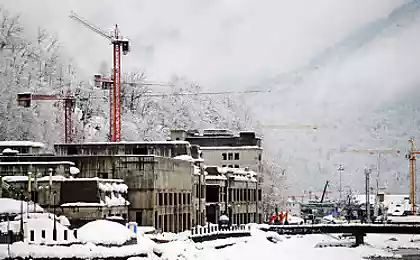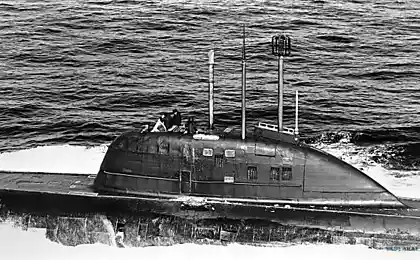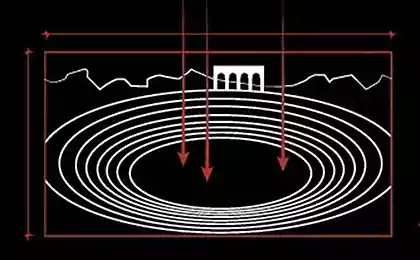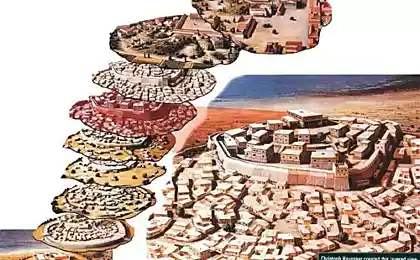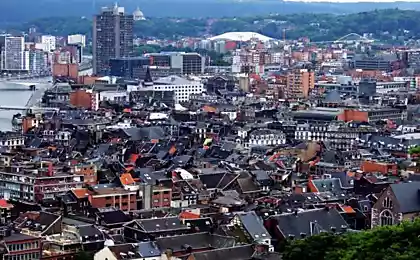642
The most significant architectural blunders
This article contains the most remarkable miscalculations of architects in history and draw conclusions about what these annoying incidents taught mankind.
19 images.
via popsci.com
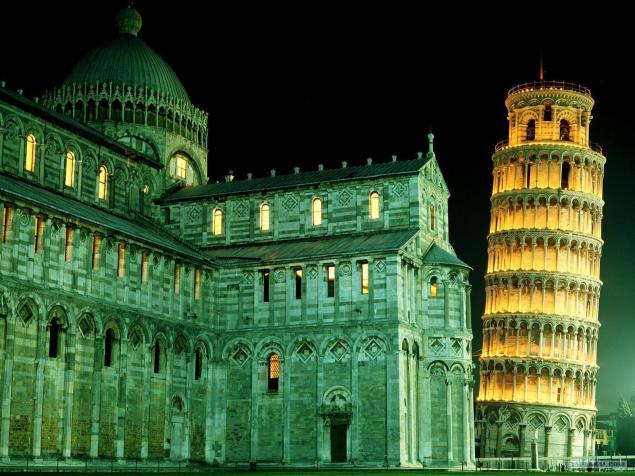
Amphitheatre Fidenah.
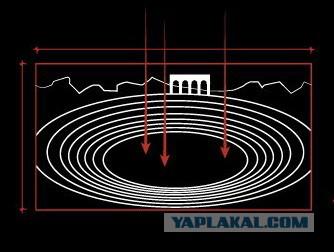
Date 27 AD
Location: City fidenae
Current status: Destroyed
Fidensky amphitheater was destroyed in 27 AD This wooden structure collapsed because of too large crowds who came to see the gladiatorial games. This event convinced the architects of the need to strengthen buildings.
Lesson learned: The account of the weight that can withstand the structure.
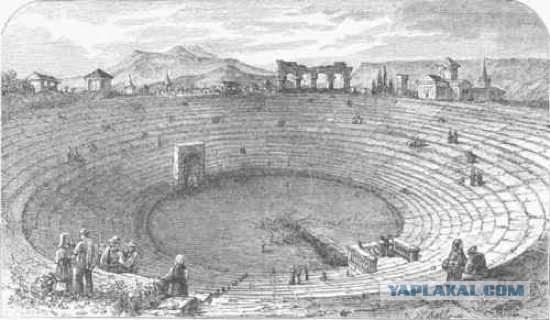
Alexandrian lighthouse.
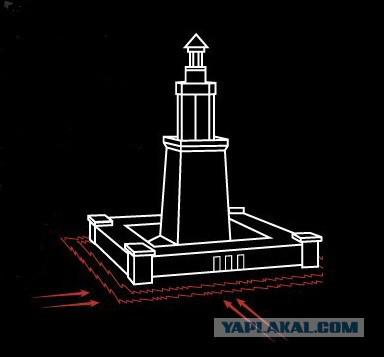
Date: 1303
Location: Alexandria
Current status: Destroyed
Pharos Lighthouse of Alexandria was one of the seven wonders of the ancient world, until in 1303 was destroyed by an earthquake. Since the first construction (about 280 BC), this building is an example of unusual architecture, because the height of the lighthouse was about 384 feet (the height of a 42-storey building), and at the same time was able to withstand ocean storms, several previous earthquakes and wars.
Lesson learned: Unfortunately, some buildings do not last forever. Advances in technology helps buildings to withstand the harshest environmental conditions.
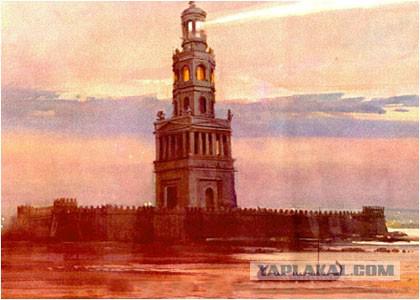
Leaning Tower of Pisa.
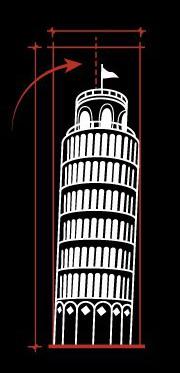
Date: 1173
Location: Pisa
Current status: An
At the beginning of the construction of the inclined tower of Pisa in 1173 it reached a height of 60 meters. The tower was built on marshland, in connection with which the whole structure began to lean. Ultimately, in order to prevent falls, the tower took underpinning.
Lesson learned: It is important to create a solid foundation and construction of buildings it is on it.
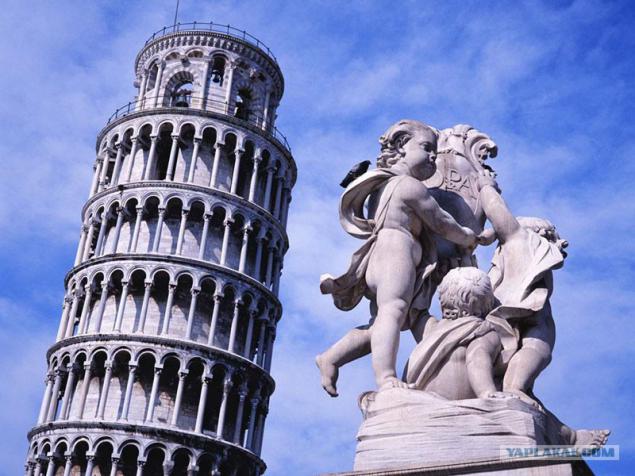
Yet.
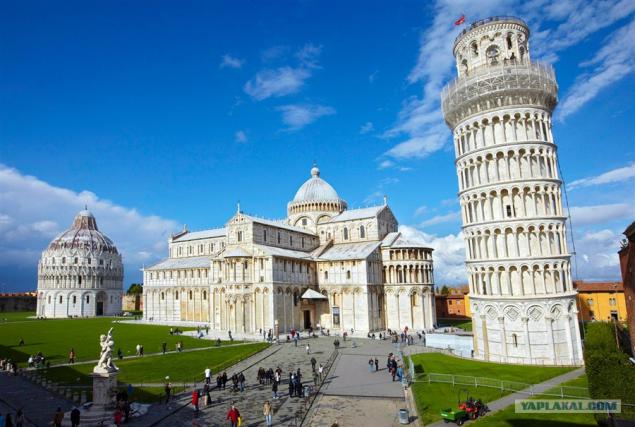
As it leveled.
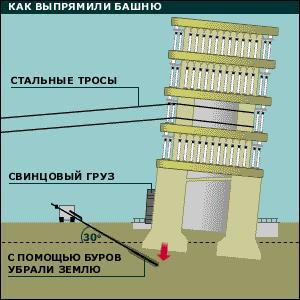
Dam St. Francis.
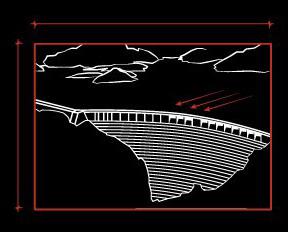
Date: 1928
Location: Los Angeles
Current status: Destroyed
Dam St. Francis was built in 1924 and collapsed in 1928, in structural and geological reasons. As a result, 600 people died in the floods caused by defects in the foundation of the dam.
Lesson learned: In order to ensure public safety are extremely important regular inspections of industrial facilities, as dams, bridges, etc.
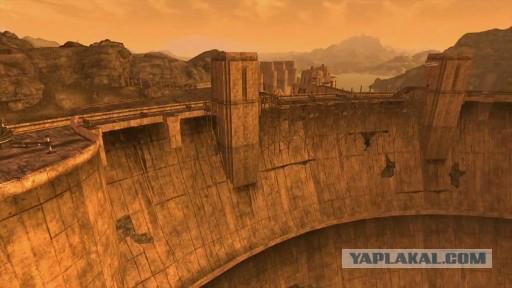
Takomsky bridge.
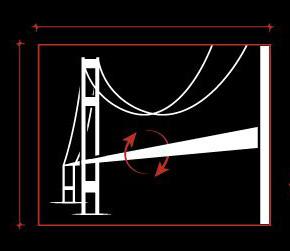
Date: 1940
Location: Tacoma
Current status: Restored
In 1940, the Tacoma Narrows Bridge Narrows-hit during a storm, becoming the largest artificial reef, as well as the most dramatic in the history of bridge construction error. Since designing suspension bridges was reversed.
Lesson learned: In the construction must always be taken into account such natural factors such as wind and weather changes.
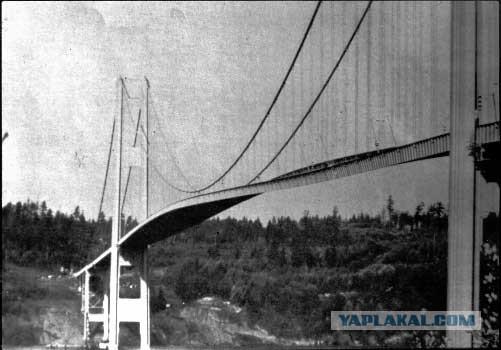
John Hancock Tower.
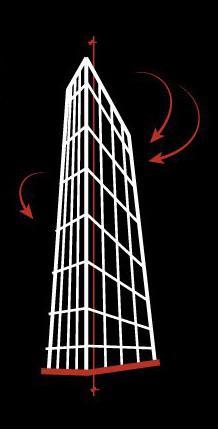
Date: 1976
Location: Boston
Current Condition: Good
John Hancock Tower - a 60-storey skyscraper in Boston, which was inaugurated in 1976. Due to the constant thermal stress suffered by the panel building, its windows and took off, flying hundreds of feet, crashed on the asphalt. It was eventually replaced by 10 thousand windows. The total cost of repairs amounted to $ 5 million. Another miscalculation was the inability of the architects of the building to resist strong gusts of wind, which is why the building too loose. This triggered bouts of motion sickness among residents of the upper floors.
Lesson learned: In the construction of large buildings such as skyscrapers, minor factors entail significant consequences.
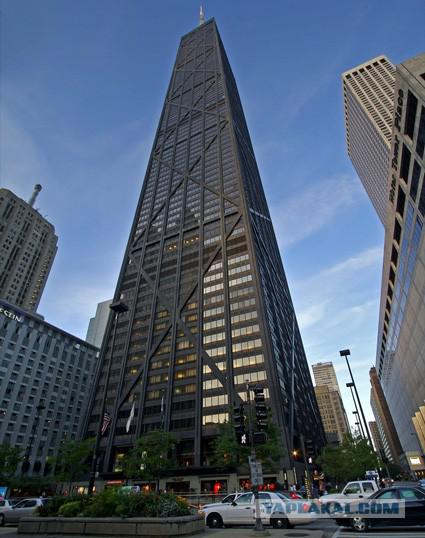
Spa Hotel "vdarit."
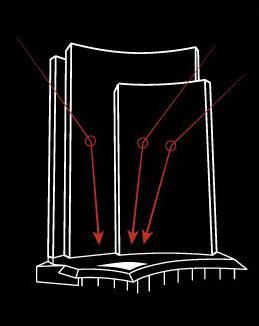
Date: 2009
Location: Las Vegas
Current state: Renovated
In 2009, in Las Vegas opened spa hotel "vdarit." Its unique curved design contributed to the accumulation of solar rays and their reflection in the direction of the hotel's pool. This often led to a rise in temperature of the pool, causing sunburn in humans and melting objects.
Lesson learned: Architects have to juggle multiple responsibilities and rely on a variety of disciplines, including science.
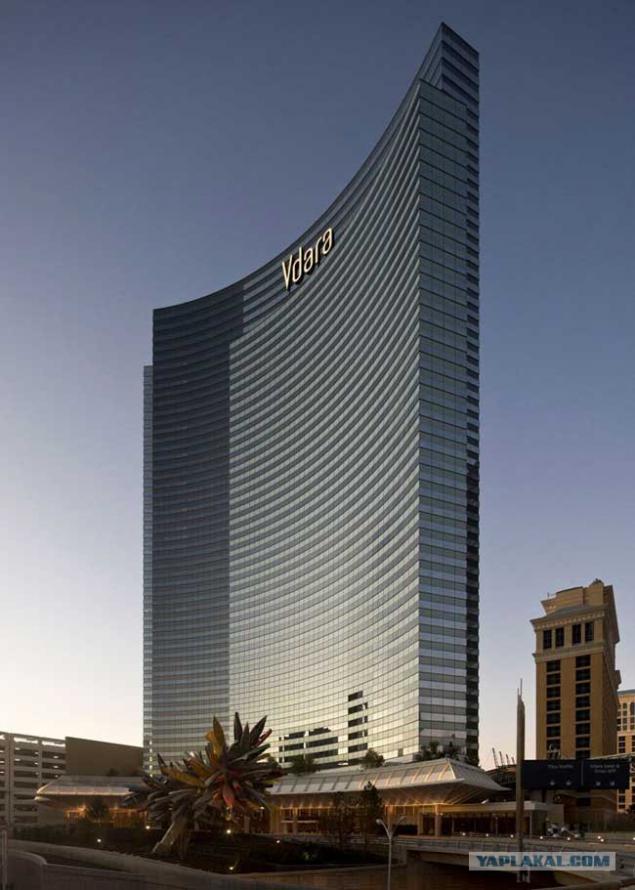
"Lotus Riverside".
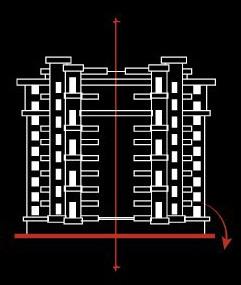
Date: 2009
Location: Shanghai
Current status: Destroyed
In 2009, the residential complex "Lotus Riverside" in Shanghai consisted of eleven 13-storey buildings. Excavation of the underground garage under one of the buildings led to the collapse of the whole house, since withdrawn from under him the land was later dumped near the river. Because of the heavy weight of the river bank collapsed, resulting in river water soaked into the ground, turning the soil under the building in the mud.
Lesson learned: Even during repair work must always check the foundations and other important elements of the design. The strength of the construction and public safety are the top priority.
Everything can be criticized :))
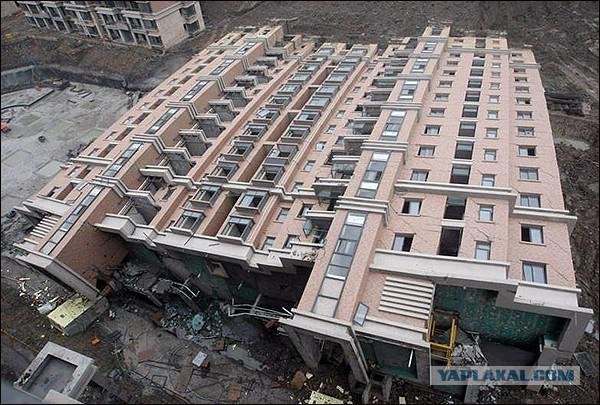
Source:
19 images.
via popsci.com

Amphitheatre Fidenah.

Date 27 AD
Location: City fidenae
Current status: Destroyed
Fidensky amphitheater was destroyed in 27 AD This wooden structure collapsed because of too large crowds who came to see the gladiatorial games. This event convinced the architects of the need to strengthen buildings.
Lesson learned: The account of the weight that can withstand the structure.

Alexandrian lighthouse.

Date: 1303
Location: Alexandria
Current status: Destroyed
Pharos Lighthouse of Alexandria was one of the seven wonders of the ancient world, until in 1303 was destroyed by an earthquake. Since the first construction (about 280 BC), this building is an example of unusual architecture, because the height of the lighthouse was about 384 feet (the height of a 42-storey building), and at the same time was able to withstand ocean storms, several previous earthquakes and wars.
Lesson learned: Unfortunately, some buildings do not last forever. Advances in technology helps buildings to withstand the harshest environmental conditions.

Leaning Tower of Pisa.

Date: 1173
Location: Pisa
Current status: An
At the beginning of the construction of the inclined tower of Pisa in 1173 it reached a height of 60 meters. The tower was built on marshland, in connection with which the whole structure began to lean. Ultimately, in order to prevent falls, the tower took underpinning.
Lesson learned: It is important to create a solid foundation and construction of buildings it is on it.

Yet.

As it leveled.

Dam St. Francis.

Date: 1928
Location: Los Angeles
Current status: Destroyed
Dam St. Francis was built in 1924 and collapsed in 1928, in structural and geological reasons. As a result, 600 people died in the floods caused by defects in the foundation of the dam.
Lesson learned: In order to ensure public safety are extremely important regular inspections of industrial facilities, as dams, bridges, etc.

Takomsky bridge.

Date: 1940
Location: Tacoma
Current status: Restored
In 1940, the Tacoma Narrows Bridge Narrows-hit during a storm, becoming the largest artificial reef, as well as the most dramatic in the history of bridge construction error. Since designing suspension bridges was reversed.
Lesson learned: In the construction must always be taken into account such natural factors such as wind and weather changes.

John Hancock Tower.

Date: 1976
Location: Boston
Current Condition: Good
John Hancock Tower - a 60-storey skyscraper in Boston, which was inaugurated in 1976. Due to the constant thermal stress suffered by the panel building, its windows and took off, flying hundreds of feet, crashed on the asphalt. It was eventually replaced by 10 thousand windows. The total cost of repairs amounted to $ 5 million. Another miscalculation was the inability of the architects of the building to resist strong gusts of wind, which is why the building too loose. This triggered bouts of motion sickness among residents of the upper floors.
Lesson learned: In the construction of large buildings such as skyscrapers, minor factors entail significant consequences.

Spa Hotel "vdarit."

Date: 2009
Location: Las Vegas
Current state: Renovated
In 2009, in Las Vegas opened spa hotel "vdarit." Its unique curved design contributed to the accumulation of solar rays and their reflection in the direction of the hotel's pool. This often led to a rise in temperature of the pool, causing sunburn in humans and melting objects.
Lesson learned: Architects have to juggle multiple responsibilities and rely on a variety of disciplines, including science.

"Lotus Riverside".

Date: 2009
Location: Shanghai
Current status: Destroyed
In 2009, the residential complex "Lotus Riverside" in Shanghai consisted of eleven 13-storey buildings. Excavation of the underground garage under one of the buildings led to the collapse of the whole house, since withdrawn from under him the land was later dumped near the river. Because of the heavy weight of the river bank collapsed, resulting in river water soaked into the ground, turning the soil under the building in the mud.
Lesson learned: Even during repair work must always check the foundations and other important elements of the design. The strength of the construction and public safety are the top priority.
Everything can be criticized :))

Source:
